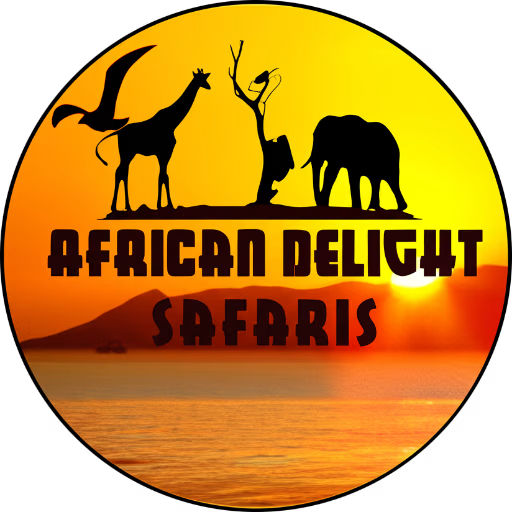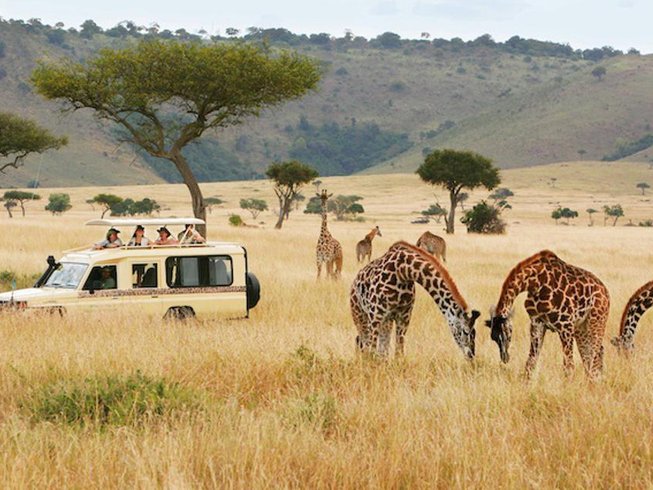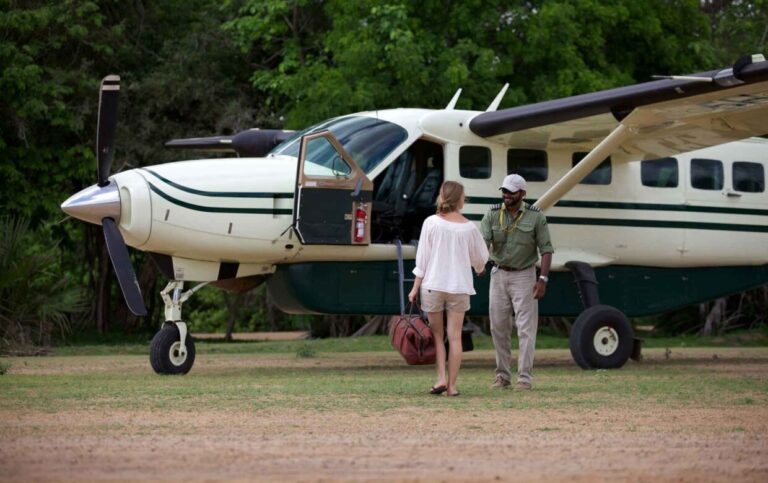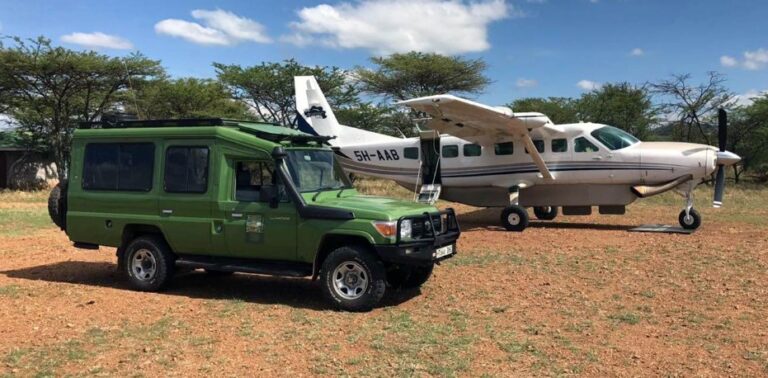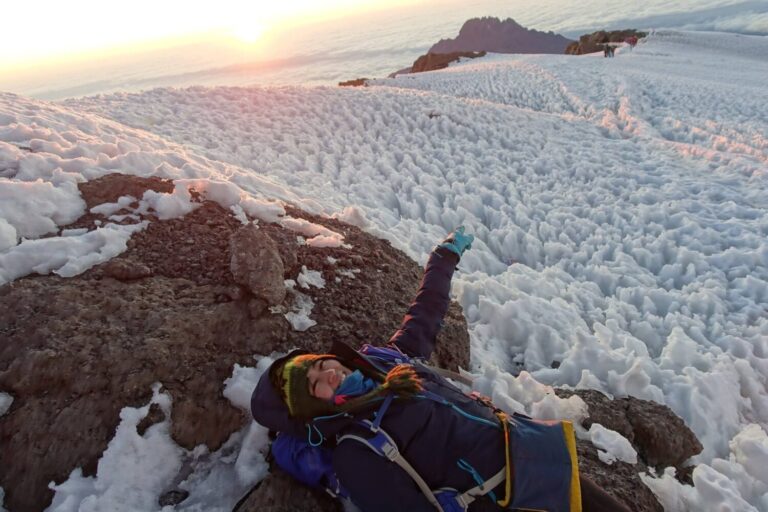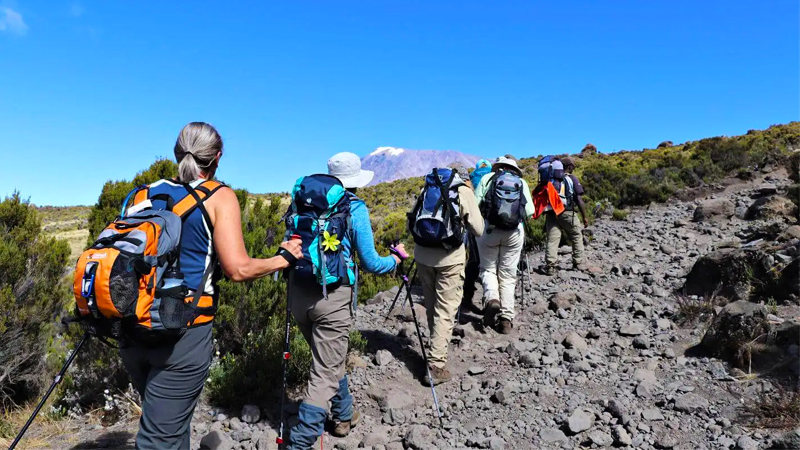
Understanding Mt. Kilimanjaro hiking difficulty is key to preparing for a successful summit of Africa’s tallest mountain. Standing at 5,895 meters (19,341 feet), Mount Kilimanjaro attracts thousands of climbers each year — from first-time trekkers to seasoned hikers. While it does not require technical climbing skills, the challenge lies in the altitude, physical endurance, and varying trail conditions across different routes.
Factors such as your fitness level, route choice, acclimatization schedule, and mental readiness all play a role in determining how difficult the trek will feel. In this guide, we’ll break down what influences the Mt. Kilimanjaro hiking difficulty, compare popular routes, and offer practical tips to help you prepare for a safe and rewarding climb.
IS KILIMANJARO A HIKE? A CLIMB? OR A TREK?
The difference lies in the gear and knowledge required.
A hike is the simplest form of outdoor activity — just walking. No special gear or technical know-how is needed. Many people hike in regular sneakers, carrying a small backpack with water and snacks. Of course, some hikes involve longer distances, steep ascents, and multiple days, but hiking overall is straightforward. If you can walk, you can hike.
Mount Kilimanjaro is one of the Seven Summits, the tallest peaks on each continent.
Trekking involves more remote terrain over several days. It calls for sturdier footwear, a supportive backpack, and sometimes trekking poles. It’s a more demanding activity than hiking. Technically, Kilimanjaro is a trek. It takes between five and nine days to summit, traversing varied terrain and altitude. While no climbing skills are needed, a professional guide is essential. Most trekkers walk unassisted, but some may use poles or supplementary oxygen to aid the ascent. That’s why Kilimanjaro is commonly called a trek.
Climbing, or mountain climbing, usually refers to technical ascents requiring ropes, helmets, or crampons. While Kilimanjaro doesn’t require such gear, acclimatization to altitude is key — just like in serious climbs. Mount Kilimanjaro stands out among the Seven Summits because it doesn’t need special equipment. So while it’s a mountain climb, it’s not a technical climb.
The journey typically begins as a hike, transitions into a more demanding trek, and concludes as a rewarding mountain climb. All three terms apply — but if you’re being precise, Kilimanjaro is best described as a trek.
So yes, daily hikes contribute to the overall trek of climbing Mount Kilimanjaro.
CAN ANYONE CLIMB MOUNT KILIMANJARO?
Yes — with the right mindset, preparation, and support, almost anyone can reach the summit of Mount Kilimanjaro.
At African Delight Safaris, we’ve guided people from all walks of life — from young adventurers to senior hikers — to the top of Africa’s highest peak.Climbing Kilimanjaro doesn’t require technical mountaineering skills. You won’t need ropes, harnesses, or ice axes. But you will need to be physically prepared, mentally committed, and guided by professionals who understand the mountain’s challenges.
People of all ages, fitness levels, and abilities have successfully completed this trek. Whether you’re seeking a personal challenge, a life milestone, or a meaningful adventure, Kilimanjaro offers an achievable goal — as long as you train and take your time to acclimatize. That said, the trek is not suitable for everyone. People with serious heart or lung conditions, or those very young in age, should consult a doctor before attempting the climb. Tanzanian law requires climbers to be at least 10 years old, although special permissions may be granted for unique circumstances.
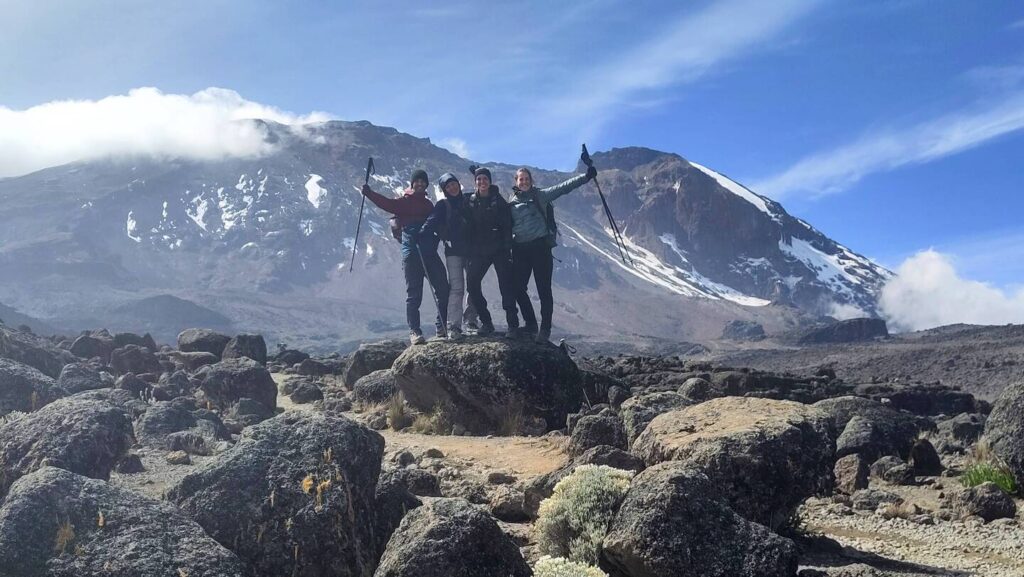
Even with conditions like asthma or diabetes, many trekkers have succeeded — but it’s important to train, plan ahead, and get medical clearance if needed. With proper training, equipment, and experienced guides, the journey to Uhuru Peak is within your reach. At African Delight Safaris, we’ll help you prepare, support you every step of the way, and celebrate with you at the summit. Here’s our guide for solo hikers on Mt. Kilimanjaro
TRAINING, WEATHER & EQUIPMENT FOR KILIMANJARO
When people ask about Mt. Kilimanjaro hiking difficulty, I always say: the better prepared you are, the more enjoyable your climb will be. You don’t need to be a professional mountaineer — far from it — but having good fitness, stamina, and a positive mindset makes all the difference. It helps if you can walk for several hours a day, up and down hills, with a backpack. Training beforehand with cardio (like running, hiking, swimming), plus strength for your legs and core, will give you the confidence and energy you need on the mountain.
Weather on Kilimanjaro is another factor to be ready for. You’ll pass through multiple climate zones in a few days — from rainforest to moorland, alpine desert, and arctic summit. One moment you’ll be in short sleeves, the next you’ll be layering up against icy winds near Uhuru Peak. That’s why the months with more stable weather (January to early March, and June to October) are the most popular for climbing. Rainy seasons bring slippery trails and heavier conditions — which can make things tougher.
Lastly, having the right equipment is key. A good pair of worn-in hiking boots, warm layered clothing, a quality sleeping bag for sub-zero nights, trekking poles to ease the strain on your knees, and a headlamp for the midnight summit push — all of these will make your trek more comfortable. Reliable operators, like African Delight Safaris, provide all the camping gear, but having your own well-fitting personal gear can take your experience to the next level. Read our Mt. Kilimanjaro packing list guide


MT. KILIMANJARO HIKING DIFFICULTY ACCORDING TO ROUTES
When planning your climb, understanding the Mt. Kilimanjaro hiking difficulty on each route helps you choose the best path suited to your fitness level, experience, and time availability. Each trail offers different terrain, elevation profiles, acclimatization opportunities, and scenery — all of which affect how challenging the hike will feel.
1. Lemosho Route
One of the most scenic and beginner-friendly routes. Its gradual ascent gives your body more time to adjust to the altitude, making it ideal for first-time trekkers. Best done as a 7 or 8-day trek.
2. Machame Route
Known as the “Whiskey Route” — a popular trail with diverse landscapes and stunning views. The 6-day itinerary is quite demanding due to faster altitude gain, while the 7-day trek offers a better pace for acclimatization.
3. Marangu Route
Often called the “Coca-Cola Route,” this is the only trail with hut accommodation instead of tents. The 5-day trek can feel rushed and has lower summit success, so opting for a 6-day itinerary is much more advisable.
4. Rongai Route
Approaching from the northern side near Kenya, this route is quieter and offers a steady, gradual climb. A 7-day trek provides good acclimatization and is well-suited for those seeking a less crowded path.
5. Northern Circuit Route
The longest route on Kilimanjaro — and also one of the most beautiful. With an 8 to 9-day trek, it allows excellent acclimatization and fewer crowds, perfect for those who want a more immersive experience.
6. Umbwe Route
The shortest and steepest route, offering little time to adjust to altitude. Only recommended for experienced, well-conditioned climbers ready for a very demanding ascent.
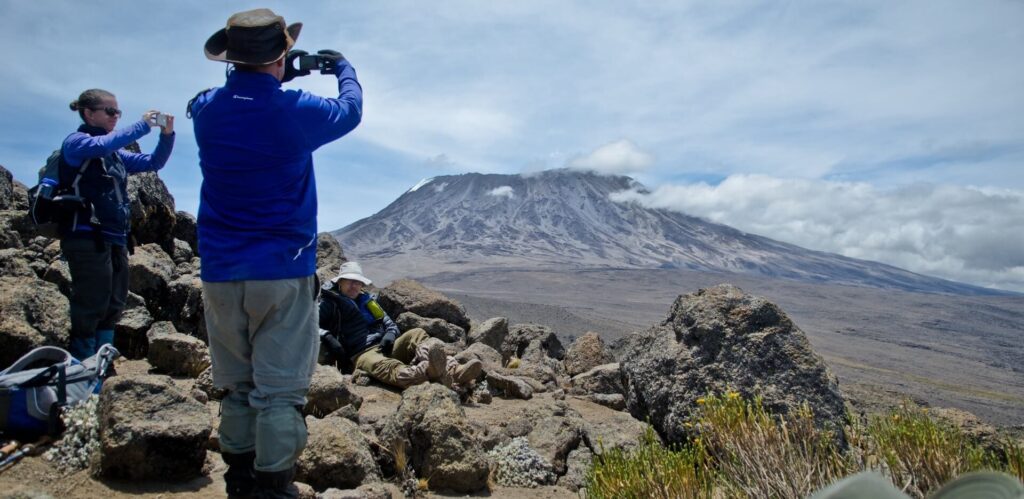
HOW HARD IS THE FINAL PUSH TO THE SUMMIT?
The final ascent is where Mt. Kilimanjaro hiking difficulty truly tests even the fittest climbers. The summit night is the most physically and mentally demanding part.
The summit push typically begins just after midnight from high camps like Barafu camp or Kibo Hut, with trekkers aiming to reach Uhuru Peak by sunrise. The challenge is not technical, but the combination of extreme altitude, cold temperatures (often well below freezing), and hours of steep uphill trekking on loose scree makes this stage very demanding. At this altitude, oxygen levels are roughly 50% of what you breathe at sea level, which can lead to fatigue, shortness of breath, and altitude-related symptoms.
Success during the summit push depends greatly on proper acclimatization, a steady pace, mental determination, and support from experienced guides. While this part of the climb is tough, reaching the “Roof of Africa” is an unforgettable reward for your effort.
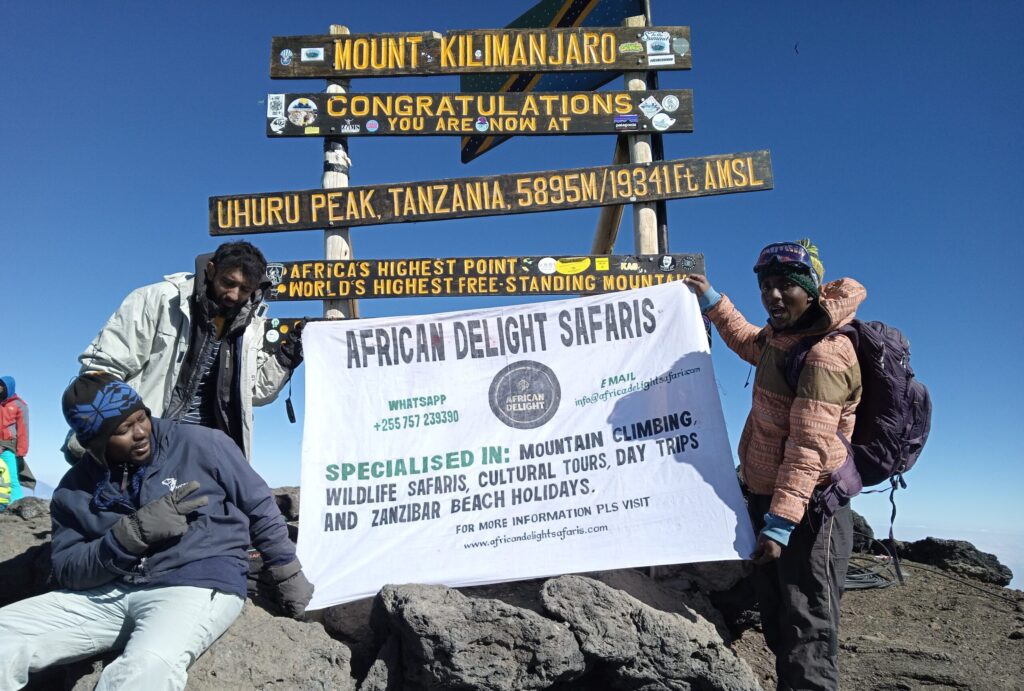

HOW MANY DAYS TO REACH THE SUMMIT?
While elite athletes like Karl Egloff have reached the summit in under 7 hours, most climbers need 7–9 days to properly acclimatize. One of the key factors influencing Mt. Kilimanjaro hiking difficulty is the number of days you choose for your trek. On average, most routes take between 5 to 8 days to reach the summit, with longer itineraries offering better chances of success. The extra days help your body acclimatize to the altitude, which reduces the risk of altitude sickness and makes the climb more manageable. Popular routes like the 7-day Machame, 8-day Lemosho, and 7-day Rongai are designed to gradually expose you to higher elevations before your summit attempt. In contrast, shorter routes may increase the difficulty due to rushed acclimatization. Choosing the right number of days is essential to balance the physical challenge and maximize your summit success.
Avoid 5- and 6-day treks unless you are very fit or experienced. The extra time greatly improves your chance of success and reduces the risk of altitude sickness.
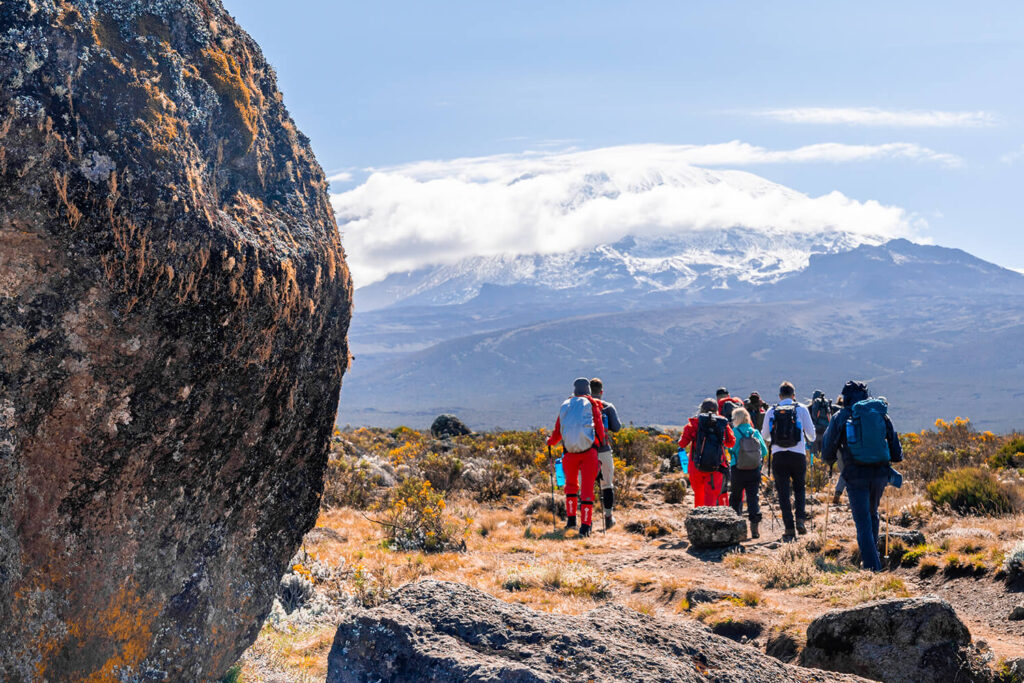
WHAT IS THE KILIMANJARO SUCCESS RATE?
Official statistics from 2006 (now outdated) showed:
- 5-day routes – 27% success
- 6-day routes – 44% success
- 7-day routes – 64% success
- 8-day routes – 85% success
Modern trekking standards have improved with better gear, guides, and route planning — so actual success rates are likely higher today.
CLIMB KILIMANJARO WITH AFRICAN DELIGHT SAFARIS
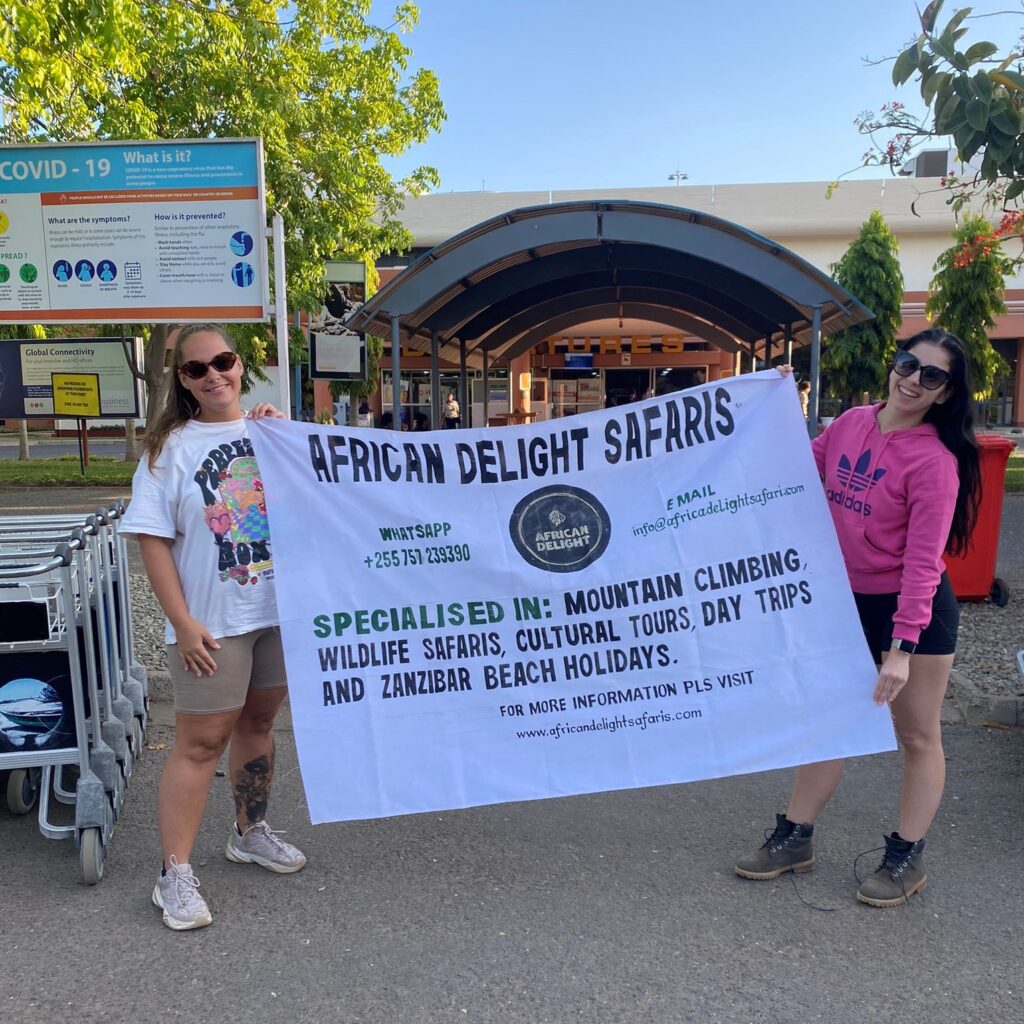
We provide:
- Experienced guides trained in altitude awareness and emergency response
- Reliable equipment or rental options for those who don’t want to invest in new gear
- Flexible itineraries and training support
- A personal, caring approach to every climber
Contact us today to plan your trek to the Roof of Africa — safely, confidently, and at your pace.
